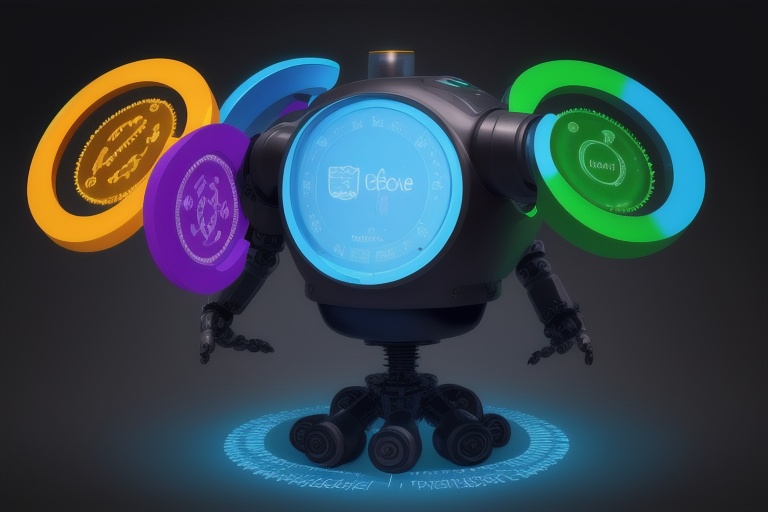The conversation surrounding artificial intelligence (AI) and its foray into the creative realm of art is as rich and intricate as the pieces that technology produces. At the epicenter of this discussion is the nature of AI-generated art and the ongoing deliberation regarding its authenticity and legitimacy as "real" art. Skeptics hold firmly to the belief that AI art lacks the essential element of intentionality, an ingrained human capability to manifest creativity in ways that provoke deep-seated emotions and thoughts. This camp posits that without an underlying intent, art created by AI is merely a hollow imitation, devoid of the soul-stirring qualities that define true artistic masterpieces.
The conversation surrounding artificial intelligence (AI) and its foray into the creative realm of art is as rich and intricate as the pieces that technology produces. At the epicenter of this discussion is the nature of AI-generated art and the ongoing deliberation regarding its authenticity and legitimacy as "real" art. Skeptics hold firmly to the belief that AI art lacks the essential element of intentionality, an ingrained human capability to manifest creativity in ways that provoke deep-seated emotions and thoughts. This camp posits that without an underlying intent, art created by AI is merely a hollow imitation, devoid of the soul-stirring qualities that define true artistic masterpieces.
On the opposite side of the spectrum, there are enthusiasts who welcome AI-generated art as an avant-garde medium that challenges preconceived notions. They celebrate AI art for its ability to expand the existing vocabulary of artistic expression and redefine creativity's boundaries. This faction anticipates that as AI grows more sophisticated, its contributions will incite even greater innovation within the art community.
A pivotal concern in the AI-art discourse is the question of authorship and copyright when an AI system generates new works by remixing a constellation of ideas sourced from a seemingly infinite database. The exact point where inspiration ends and infringement begins remains a matter of intense debate, given the AI's ability to amalgamate countless existing pieces into something novel—raising red flags regarding originality and ownership rights.
Despite these contentious issues, the relentless march of AI's integration into the art world is irrefutable. Its capabilities, while under scrutiny, have carved out a unique niche within creative circles that cannot be ignored. The potential for AI to take on increasingly significant roles across varying artistic fields hinges upon the continued evolution of technology.
The philosophical and moral concerns that AI-generated art brings to the fore will stay at the forefront of discourse, inviting both criticism and contemplation. Although AI might never eclipse the full spectrum of human creativity—the depth of emotion, the experiential nuances, and the sheer unexpectedness—it opens a window for us to view art through an alternative lens.
The current era, defined by the confluence of AI and artistic endeavor, presents an uncharted landscape brimming with prospects and pitfalls. As observers and participants, we are situated at a historic juncture where the unfolding narrative of AI art is being written. The lasting influences and the ultimate capabilities of this synergy, wrapped in a cocoon of complexity, will unfurl in due course.
The Intentionality behind AI-Generated Art
AI's role in art production has sprouted a major debate: does intention influence the validity of a piece as art? Traditional views of creativity often place human intention as a cornerstone, and some would argue that without it, AI is simply processing inputs without understanding their emotional weight or cultural significance. This perspective maintains that the artist's self-expression, experiences, and thought processes are integral to the art's value.
AI's Challenge to the Concept of Creativity
Conversely, there is a growing cohort that embraces the challenge AI poses to our traditional grasp on creativity. This group sees AI as an artistic tool, much like a paintbrush or chisel, that is merely an extension of the artist. They argue that creativity can emerge from the collaboration between human and machine. This symbiotic relationship yields entirely new forms of art that may never have been conceived by human minds alone.
Copyright and Ownership in AI Art
The pervasive reach of AI in combing through vast databases to create art inevitably stirs contentious debates surrounding copyright. As AI blurs the lines between existing art and newly generated pieces, legal systems struggle to keep pace. Intellectual property law, crafted with human creators in mind, faces a conundrum in determining rights when the 'creator' is a non-sentient entity. The questions swirling around ownership could reshape our understanding and governance of creative works.
AI's Growing Footprint in the Artistic Domain
AI's foray into art is unmistakable and growing. Artists and technologists alike are exploring the myriad ways AI can transform creative processes. From music composition to literary works, AI's reach extends to a pantheon of artistic disciplines. As technology continues to advance, the collaboration between human intellect and machine learning is expected to engender previously unimagined artistic endeavors.
The Philosophical Implications of AI-Created Art
The philosophical ramifications of AI-generated art cannot be overstated. AI challenges us to reconsider the nature of art and its connection to human experience. It nudges us to question the origins of creativity: is it the sole province of human consciousness, or can it be replicated—or even surpassed—by algorithms? This introspection extends to ethical considerations, as we grapple with the implications of machines producing works that resonate on a human level.
We find ourselves enveloped in an era defined by its complexity and the untold promises of AI's role in art. While it is certain that AI will never become a substitute for the breadth of human creativity, it nonetheless offers a transformative perspective. The interface of AI and art is a testament to the ever-evolving story of innovation, one that promises to captivate and challenge our perceptions of creativity for years to come.
Information for this article was gathered from the following source.


